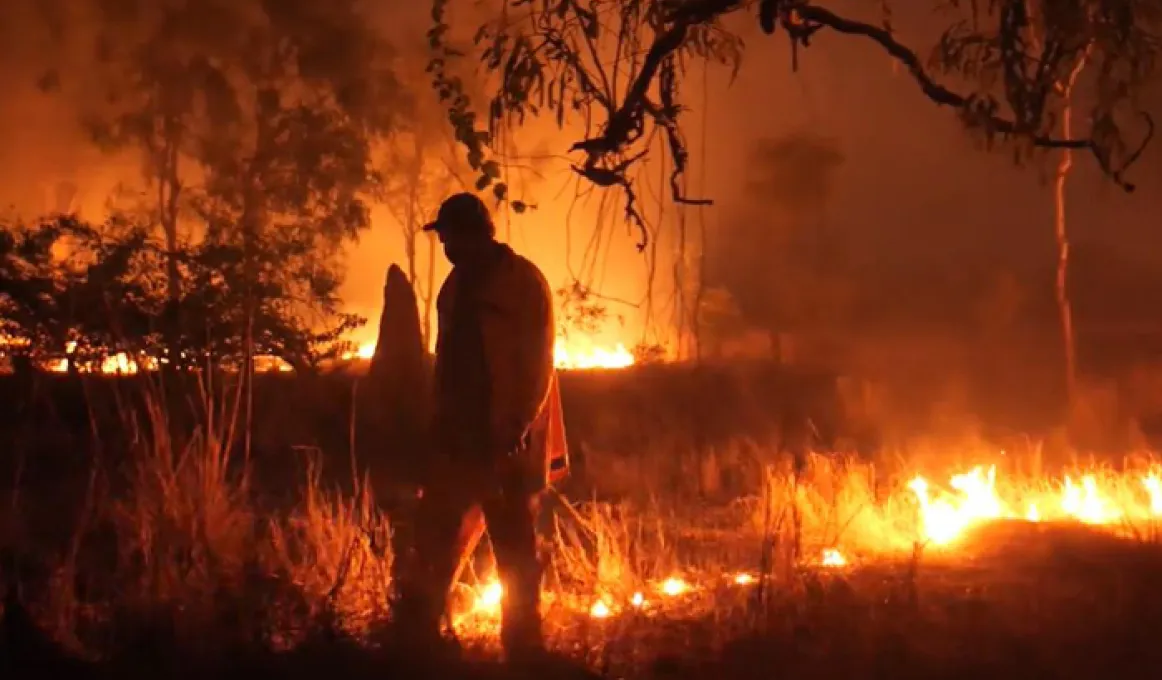The Culture of Fire Management around the Gulf of Carpentaria

Carpentaria Land Council Aboriginal Corporation’s (CLCAC) Land and Environment Rangers of the Gulf of Carpentaria region use traditional and scientific based fire management practices to maintain a healthy landscape.
The management of fire on the ancient and dry Australian landscape is a critical role of Indigenous Rangers.
The Normanton and Gangalidda & Garawa Ranger groups of the Gulf of Carpentaria combine traditional fire management with scientific techniques to manage their landscapes.
Desmond Armstrong is the Gangalidda & Garawa Ranger Coordinator based in Burketown.
‘We use incendiary equipment including pyroshots, matches and drip torches for ground initiation and aerial incendiary devices such as the gel torch, and a Raindance Systems R2 incendiary machine to initiate burns from the air,’ Desmond said.
‘We also use spatial mapping such as fire scars to plan future fires and monitor fires whilst they are occurring. We mix these modern technologies with cultural knowledge and practices, such as when to burn using seasonal environmental indicators (which have been passed down through the generations).’
‘We ensure everything we do aligns with how we do our cultural practices and does not interfere with cultural law.’
Phillip George is the Normanton Ranger Coordinator.
‘The Normanton Rangers’ fire management program is mostly focused on enhancing the environment and reducing woody weed,’ Phillip said.
‘The fire management program is also used to fulfil cultural practices and to pass down traditional fire knowledge.’
Rangers use knowledge of environmental conditions and fuel loads to ensure a safe and effective burn.
One technique is “mosaic burning” which is applied when some species of grass are haying off or drying out whilst other species are still green holding moisture. This ensures that only part of the landscape burns.
‘Land comes back healthier after burning and animals return to recently burnt areas,’ Phillip said.
‘Traditionally this was important for hunting. We strategically burn only some areas of habitat to ensure refuge areas for animals and plants. Country that hasn’t been burnt for many years can have greatly increased fuel loads and then be subject to large scale wildfires’.
The management of large areas of landscape is not for the novice, and developing the skill sets within ranger groups is key to the success of fire management programs.
‘Our Rangers are mentored by our fire management support officer and more experienced rangers in addition to the Queensland Rural Fire Service, to gain experience in basic and advanced fire management skills,’ Desmond said.
‘New Rangers also attend the Jigija fire program, which is run by the Gangalidda Garawa PBC to gain traditional knowledge and practical skills in fire management’.
The rangers of the Gulf country have found that where there has been no cool and controlled burns, only uncontrolled wildfires, one can see lots of woodland thickening.
This is sad because after all, the ultimate goal of burning is to create a healthy, inhabitable country for both wildlife and its Custodians.
Find out more
The NIAA supports CLCAC’s Normanton Ranger and Gangalidda & Garawa Ranger groups through the Indigenous Ranger Program to manage their respective Land and Sea Country, protecting it from invasive species and maintaining its natural and cultural heritage.